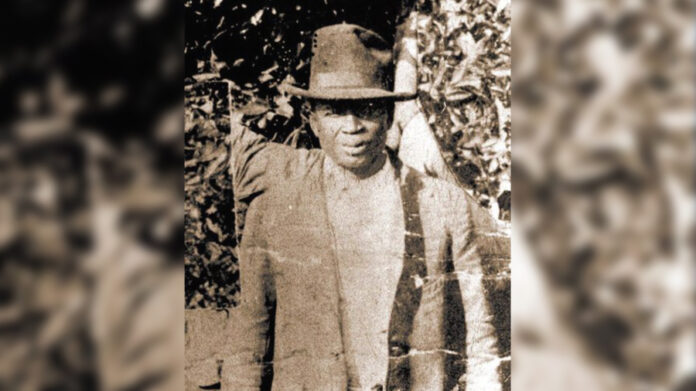Tampa, FL (WFLA) – The City of Ocoee in Orange County is planning a weeklong celebration to remember the Ocoee Massacre.
During the 1920 presidential election, a group of Black Floridians went to the polls. Some were turned away, which led to a night of violence now known as the Ocoee Massacre.
July Perry was a central figure in the massacre.
On Nov. 2, 1920, Perry’s friend, Moses Norman, a black man, went to vote and was turned away.
Norman and Perry, both black landowners, had encouraged other blacks and women to vote in the presidential election.
Republican Warren G. Harding was up against Democrat James Cox.
At the time, the Republican Party was the party of choice for Blacks.
Hillsborough County Reverend Stephen Nunn knows the stories of that deadly day firsthand. He heard them from his grandmother.
“All of a sudden she said, I’m gonna tell you a story and share it with you. But I’m going to share it with you with great hesitation and reservation because I vowed I’d never talk about it again,” Nunn said.
Nunn’s grandmother was Perry’s oldest daughter. She told him the story of the Ocoee Massacre when he was just a teen.
“In my mind I was thinking, this can’t be true and can never have happened to my great grandmother and my great grandfather. She has to be making this up,” Nunn said.
St. Petersburg resident J. Carl Devine knows the horrible history of Ocoee too. His grandparents, John and Roxie Williams, lived it and passed the stories down.
“They had cried so much about it, they would laugh at some of the stuff that happened… The pain was just that great for them,” Devine said.
Devine’s grandfather worked for Nunn’s great grandfather, July Perry.
The details of that night, now on display at the Orange County Regional History Center, show a group of armed white men went to Perry’s home on election night and violence ensued.
Chief Curator Pam Schwartz said there are many accounts of what happened, a lot of which can’t be verified. But there are facts that are not in dispute.
“July Perry’s wife and daughter were taken to the jail in Tampa. July Perry is picked up and brought to the jail in Orlando. At some point, a lynch mob takes him from the jail, brutalizes him, and at the end of the day he is lynched… He’s hanged from a tree and is murdered,” Schwartz said.
Things only got worse.
That mob, made up of white World War I veterans from throughout Orange County galvanized.
Two dozen black homes were burned, other parts of the black community were also destroyed.
People were running out of town to stay alive.
At the end of the night, two white men were dead and at least four Blacks were killed, but it’s believed that number is far higher.
“As historians, given the current research, we say we know at least four Black individuals who were killed. That’s July Perry who was lynched and at least three other Black individuals who were burned to death,” Schwartz said.
But the Ocoee Massacre wasn’t just about the right to vote. It was about land and wealth among Blacks.
“So they’re buying properties and thus the prosperity begins in the community.”
Stephen Nunn’s family never got a dime from their great grandparents’ property.
“All of that land, the only way to put it today, is that it was robbed. They were robbed,” Nunn said.
After the massacre, properties were sold off for mere dollars. An advertisement on display at the history center in Orlando reads in part “Special bargain… belonging to the negroes that just left Ocoee.”
“Over several years there’s ongoing land sales. The land wasn’t just sort of snapped up by the white community and the Black community fled, the Black people did try to fight and keep their land or to get fair prices or to continue living there,” Schwartz explained. “But there’s ongoing terror. Up until the next year, there’s dynamite being thrown into Black people’s homes. There’s individuals being taken out and beaten and warned they’ve been talking a little too much about what happened in Ocoee last November.”
And to a great extent, it worked.
Devine’s grandmother Roxie Williams is among those listed as lost.
He is hoping people never forget what was taken there and that this continues to serve as a deadly example of the power of the vote.
“When you hear those kinds of stories and you hear people say I don’t vote,” News Channel 8’s Rod Carter started to ask Devine.
“It’s disheartening because so many people have died for the right to vote,” Devine said.
Stephen Nunn feels the same.
“The greatest memory I would want to leave is the fact that he was a just man. He was a businessman. He was a community man. He was a religious man. He was a family man. He loved and took care of his family and he had to die over a principal that we still debate today and some are lackadaisical about it,” Nunn said.
That year, of the more than 800 registered voters in Ocoee, about 114 cast ballots and 27 of them were Black.
The Black population of Ocoee has remained extremely small since the massacre and the area became known as a sundown town, which meant Blacks who didn’t live there, were not allowed in the town after the sun went down.
That only changed two years ago, when Senator Randolph Bracy from Orlando sponsored a bill to bring recognition and have the story of the massacre taught in schools.
A bill to provide reparations died.
Click here to learn more about the exhibit at the Orange County History Center.
Click here to see the schedule of event commemorating the Ocoee Massacre.
>> Follow Rod Carter on Facebook
>> Follow Rod Carter on Twitter
LATEST NEWS FROM WFLA.COM:














